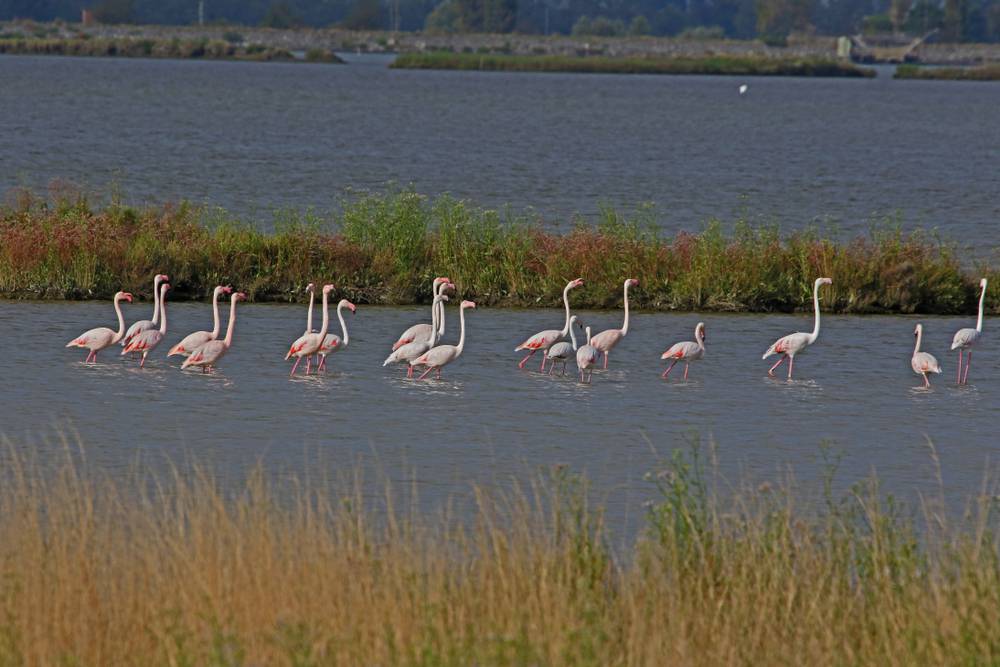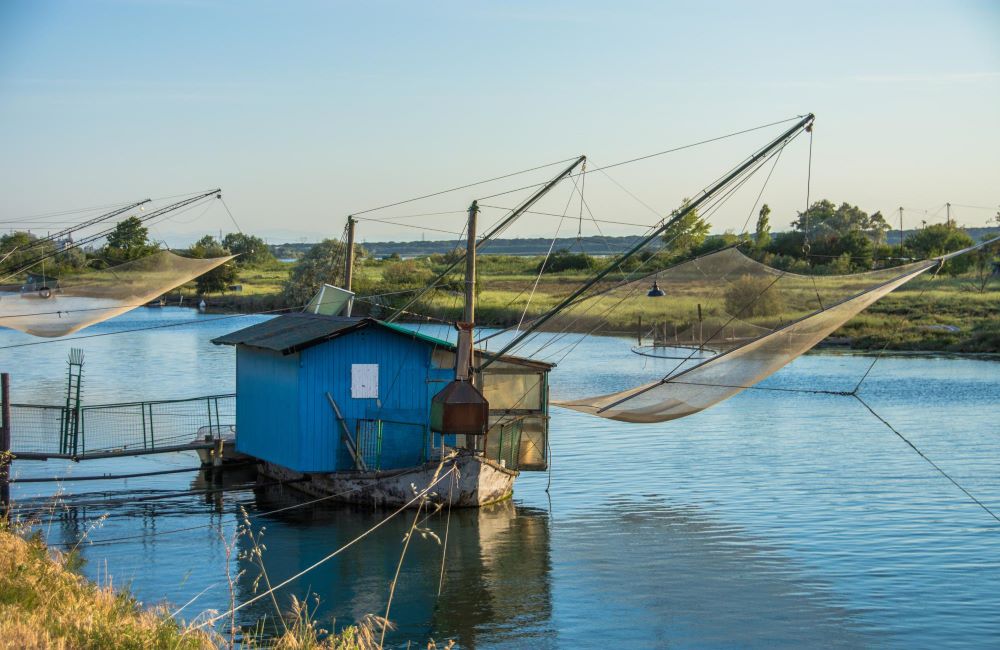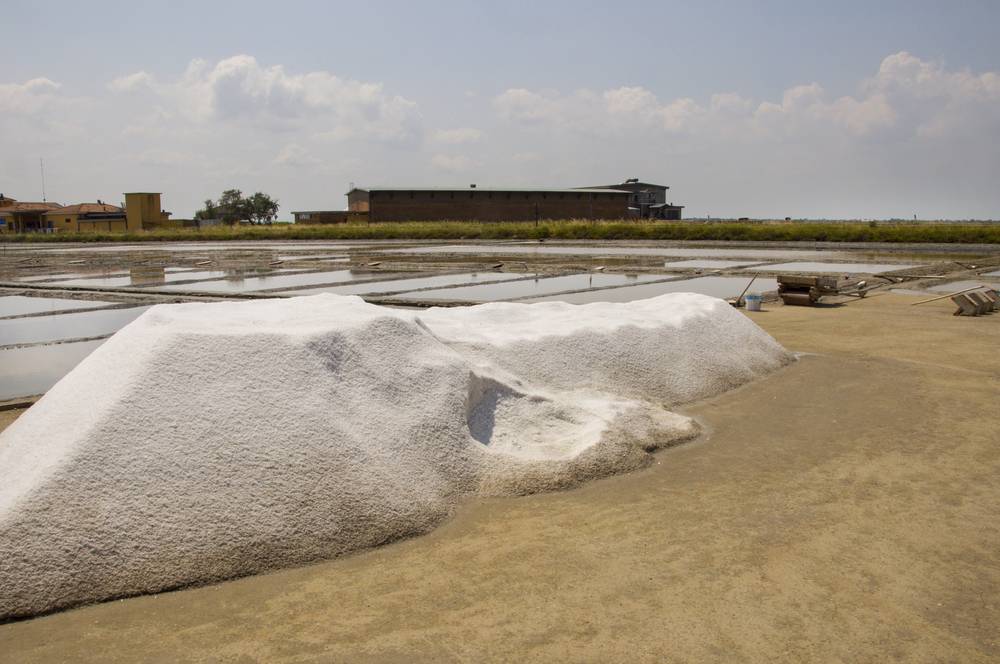The wetlands that stretch southwards from Comacchio to Cervia are in fact a safe haven for pink flamingos. If you are wondering what is the best time to see them in the Comacchio valleys and along the Adriatic coast, the answer is in spring and summer, the nesting seasons.
But if you are reading this article in autumn or winter, there is no problem. As in other parts of Italy, flamingos are now nonmigratory in the Po Delta area and therefore stay in these areas even in the cold months.
Ready to go birdwatching? Then let's see where to go to observe them up close.
Comacchio Salt Pan and Valle Campo
The Comacchio Salt Pan and its valleys are part of the Emilia-Romagna Po Delta Park, a vast protected area that includes a large part of the Adriatic coast from the province of Ferrara to Cervia.Thanks to the biodiversity of the habitat where the valleys alternate with pine forests and wetlands, flamingos have long acclimatised in this part of the region. Not everyone knows, however, that they have not lived here forever.
The first specimens arrived in Italy in the 1970s from the Camargue in the south of France, which was experiencing a period of drought. Over the years, one of the densest flamingo colonies in Italy has taken shape in the Comacchio valleys.
We advise you to drive to the Comacchio salt pan and leave your car in the car park, or head for the nearby Valle Campo to see them. Take your binoculars or telephoto lens with you, as they may be far from your observation point. Remember, however, that access to these areas is only allowed in the company of a guide on precise days and times, which can be consulted on the salt pan website.

Pialassa Baiona at Marina Romea
Like the Comacchio and Cervia salt pans, which we will see below, the Pialassa Baiona is also part of the Po Delta Park.
The Pialassa is a lagoon located near the seaside resort of Marina Romea, on the Ravenna coast, about 20 km south of the Comacchio salt pan. Its name derives from the fact that its basins constantly 'catch' and release sea water.
Here too, dense flocks of flamingos like to stop almost all year round, and it is possible to admire them on their own or on a guided tour.
A fun and environmentally friendly way to visit the Pialassa is to take part in a one-day bike tour, departing from Ravenna and visiting the Pialassa Piomboni and Baiona. During the tour you can also explore the Baiona on board a boat, in search of flamingos and other birds typical of the area enveloped in the silence of the lagoon.

The Cervia Salt Pans
The Cervia salt pans are the largest in the Upper Adriatic region. And they are still in operation today: the over 50 reservoirs are still used for the production of salt, which is called 'sweet' in Cervia. This strange definition derives from the fact that the taste of Cervia salt is less bitter than other cooking salts.The salt mine is a truly fascinating place, especially at sunset, when the basins reflect the colours of the sun and the atmosphere becomes even more magical. The expanses of water are normally pink in colour, due to the presence of small crustaceans (Artemia salina) inside the salt. Flamingos are fond of these small organisms, and it is from them that the pink colour of their feathers derives.
To visit the salt mine you will have to take part in a guided tour, as it is a protected area and therefore access is not free. However, if you drive along the road through the salt marsh, in the direction of Villa Inferno, you can still catch a glimpse of the flamingos resting in the basins, or gently hovering in flight.


